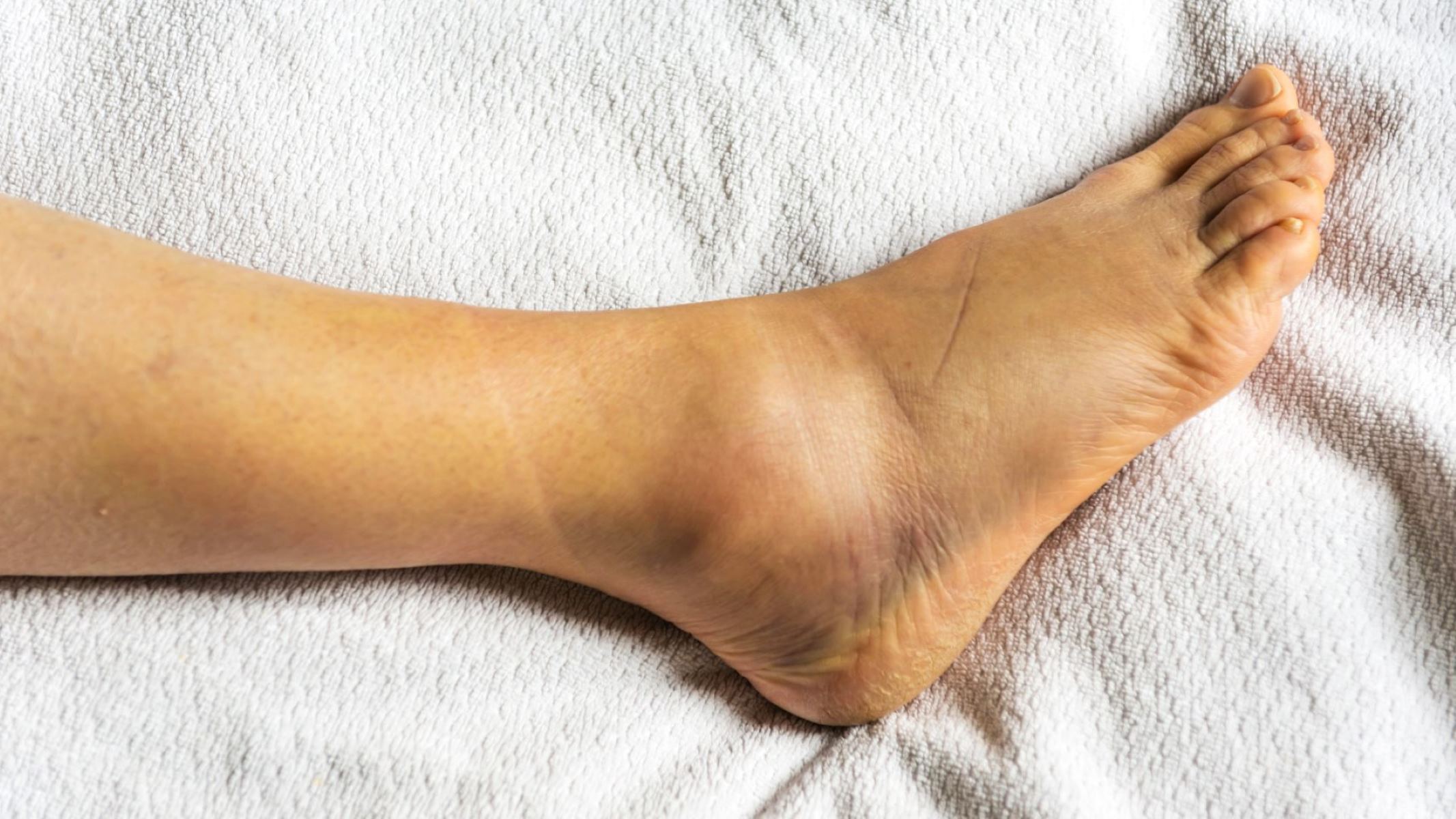Home>Health & Nutrition>Consulting A Podiatrist: Troubles With My Big Toe Remaining Flat


Health & Nutrition
Consulting A Podiatrist: Troubles With My Big Toe Remaining Flat
Published: February 20, 2024
Consult a podiatrist for expert advice on addressing flat big toe issues. Prioritize your health and nutrition with personalized solutions.
(Many of the links in this article redirect to a specific reviewed product. Your purchase of these products through affiliate links helps to generate commission for Therunningadvisor.com, at no extra cost. Learn more)
Table of Contents
Understanding the Causes of a Flat Big Toe
A flat big toe, also known as hallux valgus, can be a source of discomfort and inconvenience. Understanding the underlying causes of this condition is crucial for effective management and treatment. Several factors can contribute to the development of a flat big toe, including genetics, improper footwear, and structural abnormalities.
Genetics
Genetics play a significant role in the development of a flat big toe. Individuals with a family history of bunions or flat feet are more susceptible to experiencing this condition. The inherited foot structure can predispose individuals to abnormalities in the alignment of the big toe, leading to its flattening over time.
Improper Footwear
Wearing ill-fitting or narrow-toed shoes can exert excessive pressure on the toes, particularly the big toe. This pressure can force the big toe to deviate from its natural alignment, contributing to the development of a flat toe. Additionally, high heels and shoes with inadequate arch support can exacerbate the condition, leading to discomfort and progressive deformity.
Structural Abnormalities
Certain structural abnormalities within the foot can contribute to the development of a flat big toe. For instance, conditions such as hypermobility of the first metatarsal bone or laxity of the ligaments can disrupt the normal alignment of the big toe, resulting in its flattening. Moreover, abnormalities in the arch of the foot, such as flat feet or fallen arches, can impact the distribution of weight and pressure, potentially leading to the flattening of the big toe.
Understanding the multifaceted causes of a flat big toe underscores the importance of seeking professional guidance from a podiatrist. By addressing the underlying factors contributing to this condition, individuals can receive personalized treatment and preventive strategies to alleviate discomfort and promote optimal foot health.
The Importance of Consulting a Podiatrist for Flat Toe Troubles
Seeking professional guidance from a podiatrist is paramount when experiencing troubles with a flat big toe. Podiatrists are specialized healthcare professionals with extensive knowledge of the foot's structure and function. Their expertise enables them to accurately diagnose the underlying causes of a flat big toe and develop tailored treatment plans to address the specific needs of each patient.
Podiatrists possess the expertise to conduct a comprehensive assessment of the foot, including a thorough examination of the affected toe, gait analysis, and evaluation of footwear habits. This holistic approach allows them to identify contributing factors such as genetic predispositions, structural abnormalities, and lifestyle habits that may be exacerbating the condition.
Moreover, consulting a podiatrist provides individuals with access to a wide range of treatment options tailored to their unique needs. These may include conservative measures such as recommending appropriate footwear, orthotic devices to support the foot's natural alignment, and exercises to strengthen the muscles supporting the affected toe. In cases where conservative measures are insufficient, podiatrists can also offer advanced treatment options, including minimally invasive procedures or surgical interventions to correct the deformity and alleviate discomfort.
Furthermore, podiatrists play a pivotal role in educating individuals about preventive strategies to mitigate the progression of a flat big toe and minimize the risk of future complications. By imparting valuable insights on foot care, proper footwear selection, and lifestyle modifications, podiatrists empower individuals to proactively manage their foot health and prevent the recurrence of flat toe troubles.
In essence, consulting a podiatrist for flat toe troubles offers a holistic approach to addressing the condition, encompassing accurate diagnosis, personalized treatment plans, and comprehensive guidance for long-term foot health. By leveraging the expertise of a podiatrist, individuals can gain valuable support in managing their flat toe concerns and embark on a journey towards improved foot function and overall well-being.
Treatment Options for Correcting a Flat Big Toe
Addressing a flat big toe involves a multifaceted approach aimed at correcting the deformity, alleviating discomfort, and restoring optimal foot function. Podiatrists employ a range of treatment options tailored to the severity of the condition and the individual's unique needs.
Conservative Measures
Conservative treatment measures serve as the initial line of intervention for managing a flat big toe. These may include:
-
Footwear Modifications: Podiatrists may recommend wearing shoes with a wide toe box to accommodate the natural shape of the foot and reduce pressure on the affected toe. Avoiding high heels and narrow-toed shoes is crucial to prevent exacerbation of the deformity.
-
Orthotic Devices: Custom orthotic inserts can provide essential support and alignment for the foot, helping to redistribute pressure and alleviate discomfort associated with a flat big toe. These devices are designed to promote proper foot mechanics and reduce the progression of the deformity.
-
Physical Therapy: Targeted exercises and stretching routines can strengthen the muscles and ligaments supporting the affected toe, enhancing stability and promoting proper alignment. Additionally, physical therapy can improve overall foot function and mitigate the impact of a flat big toe on daily activities.
Minimally Invasive Procedures
In cases where conservative measures yield limited improvement, podiatrists may recommend minimally invasive procedures to address the deformity. These may include:
-
Joint Manipulation: Utilizing specialized techniques, podiatrists can realign the affected joint of the big toe, reducing deviation and restoring a more natural position. This approach aims to alleviate discomfort and improve the toe's alignment without the need for extensive surgical intervention.
-
Injection Therapy: Injections of corticosteroids or other anti-inflammatory medications may be administered to alleviate pain and reduce inflammation associated with a flat big toe. This approach can provide temporary relief and facilitate the implementation of conservative measures.
Surgical Interventions
For severe or progressive cases of a flat big toe, surgical intervention may be necessary to correct the deformity and restore optimal foot function. Surgical options may include:
-
Bunionectomy: Addressing the underlying bony prominence associated with a flat big toe, a bunionectomy involves the removal of excess bone and realignment of the affected joint to restore proper toe positioning.
-
Osteotomy: This surgical procedure involves strategically cutting and repositioning the bones in the affected toe to correct deformities and restore natural alignment. Osteotomy aims to address structural abnormalities contributing to the flat toe condition.
-
Arthrodesis: In cases of severe deformity or joint damage, arthrodesis may be recommended to fuse the affected joint, providing stability and alleviating pain associated with a flat big toe.
By leveraging these treatment options, podiatrists can provide comprehensive care for individuals with a flat big toe, addressing the condition's underlying causes and promoting long-term foot health and function.
Preventing Future Issues with a Flat Big Toe
Preventing future issues with a flat big toe is essential for maintaining optimal foot health and minimizing the risk of recurrence. Implementing proactive measures and lifestyle modifications can significantly contribute to the prevention of ongoing discomfort and deformity associated with a flat big toe.
Proper Footwear Selection
Choosing appropriate footwear plays a pivotal role in preventing future issues with a flat big toe. Opting for shoes with a wide toe box allows ample space for the toes to maintain their natural alignment, reducing the risk of pressure and friction that can exacerbate the condition. Additionally, selecting footwear with adequate arch support and cushioning can promote proper foot mechanics and alleviate strain on the affected toe.
Regular Foot Care Practices
Engaging in regular foot care practices is crucial for preventing complications related to a flat big toe. This includes maintaining good hygiene, inspecting the feet for any signs of irritation or pressure points, and addressing any discomfort or abnormalities promptly. Keeping the toenails trimmed and ensuring proper moisture management can contribute to overall foot health and reduce the risk of additional complications.
Strengthening Exercises
Incorporating specific exercises to strengthen the muscles and ligaments supporting the foot can enhance stability and reduce the likelihood of a flat big toe worsening. Targeted exercises that focus on toe flexion, extension, and intrinsic foot muscle strengthening can promote optimal foot function and mitigate the impact of structural abnormalities contributing to the condition.
Weight Management
Maintaining a healthy body weight is essential for minimizing the strain on the feet and reducing the risk of exacerbating a flat big toe. Excess body weight can exert additional pressure on the feet, potentially contributing to the progression of the deformity. By adopting a balanced diet and engaging in regular physical activity, individuals can manage their weight effectively and alleviate undue stress on the feet.
Regular Podiatric Check-ups
Scheduling regular check-ups with a podiatrist is instrumental in monitoring the condition of a flat big toe and implementing preventive strategies. Podiatrists can provide valuable guidance on foot care, assess the effectiveness of current interventions, and make necessary adjustments to prevent the recurrence of issues. Additionally, routine evaluations enable early detection of any potential concerns, allowing for timely intervention and management.
By integrating these preventive measures into daily routines, individuals can proactively safeguard against future issues with a flat big toe, promoting sustained foot health and overall well-being.












